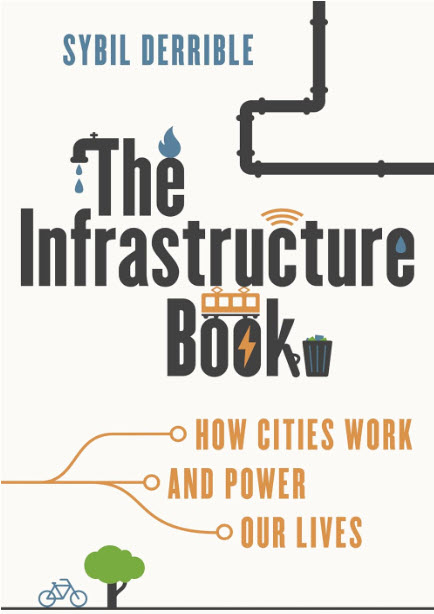The Infrastructure Book: How Cities Work and Power Our Lives, by Sybil Derrible. Amherst, New York: Prometheus Books, 2025; 260 pages, $26.95.
 Prometheus Books
Prometheus BooksAs a group, civil engineers are surely near the top of the list of those whom we would expect to be naturally “tuned in” every day to the importance of infrastructure to the proper functioning of cities and therefore much of modern society.
But just as surely, human nature is such that civil engineers likely take at least parts of it for granted at times. Now think about the average citizens who don’t spend significant parts of every working day actively thinking about and working on some aspect of infrastructure.
That thought is a significant part of what drove author Sybil Derrible to publish The Infrastructure Book. “Modern infrastructure has such a ubiquitous presence in our society,” he writes, “that we easily forget it is even there.”
Further reading
- The ASCE infrastructure report card as a resilience tool before disaster strikes
- What will go into inventing our future cities? Author offers thoughts
- Highly engineered Mississippi River became author’s obsession
We don’t forget about our easy access to clean water, of course, nor our ability to drive (or bike or fly) anywhere we want to go or our always-on connection to the vast resources of the internet. But we do grow blind to, and take for granted, the vast and complex network of systems that enable those and other miracles of modern life.
The book examines seven kinds of infrastructure: water, wastewater, transport, electricity, gas, solid waste, and telecommunication. Derrible explains that he approached The Infrastructure Book with a specific goal in mind: to provide, even for readers with no engineering knowledge at all, a basic understanding of the engineering principles that underpin those seven types of infrastructure. (He notes that the book doubles as his text for teaching first-year university students, regardless of their intended majors.)
In organizing the book, the seven areas are covered over 16 chapters, each of which uses a specific city to illustrate how the principles are implemented and work (or at times do not work) in an actual setting.
From telecommunications in New York City to electricity generation in Cape Town, South Africa, to solid waste management in Tokyo to public transportation in London and much more, Derrible literally circles the globe to make his points and teach people how to see what they usually forget to even look for. (The book also provides a bonus shorter case study from a different city at the end of every chapter to show different approaches and compare/contrast opportunities.)
Derrible, a professor of civil, materials, and environmental engineering at the University of Illinois Chicago, previously authored an urban engineering textbook and edited a collection of future-looking urban infrastructure essays. A widely recognized expert, he became an ASCE Fellow in 2025, has won the Society’s Walter L. Huber Research Prize, and won a CAREER award from the National Science Foundation.
The Infrastructure Book shares one important goal with ASCE’s Report Card for America’s Infrastructure: to bring more attention to the importance of our infrastructure and do it in a way that is understandable to the nonexpert.
Derrible’s book is a worthy new tool toward that end, expertly done with a snappy and engaging writing style perfectly suited to his goal of making engineering accessible. The author makes perhaps his most succinct and confident pitch for the book when he writes, “I promise you that by the time you are finished with this book, you will not see the world around you the same way ever again.”



